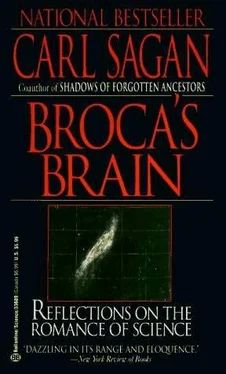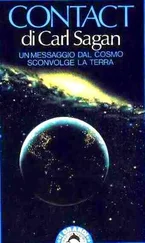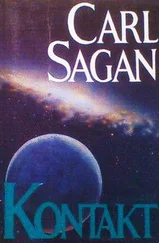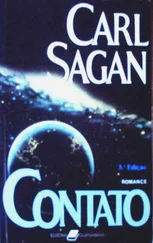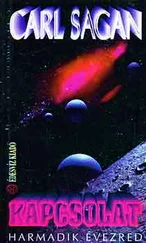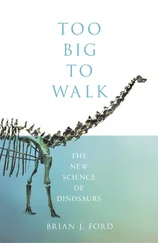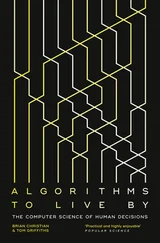Carl Sagan - Broca's Brain - The Romance of Science
Здесь есть возможность читать онлайн «Carl Sagan - Broca's Brain - The Romance of Science» весь текст электронной книги совершенно бесплатно (целиком полную версию без сокращений). В некоторых случаях можно слушать аудио, скачать через торрент в формате fb2 и присутствует краткое содержание. Жанр: Физика, на английском языке. Описание произведения, (предисловие) а так же отзывы посетителей доступны на портале библиотеки ЛибКат.
- Название:Broca's Brain: The Romance of Science
- Автор:
- Жанр:
- Год:неизвестен
- ISBN:нет данных
- Рейтинг книги:3 / 5. Голосов: 1
-
Избранное:Добавить в избранное
- Отзывы:
-
Ваша оценка:
- 60
- 1
- 2
- 3
- 4
- 5
Broca's Brain: The Romance of Science: краткое содержание, описание и аннотация
Предлагаем к чтению аннотацию, описание, краткое содержание или предисловие (зависит от того, что написал сам автор книги «Broca's Brain: The Romance of Science»). Если вы не нашли необходимую информацию о книге — напишите в комментариях, мы постараемся отыскать её.
Broca's Brain: The Romance of Science — читать онлайн бесплатно полную книгу (весь текст) целиком
Ниже представлен текст книги, разбитый по страницам. Система сохранения места последней прочитанной страницы, позволяет с удобством читать онлайн бесплатно книгу «Broca's Brain: The Romance of Science», без необходимости каждый раз заново искать на чём Вы остановились. Поставьте закладку, и сможете в любой момент перейти на страницу, на которой закончили чтение.
Интервал:
Закладка:
What, then, is all the furor about? It is about the time scale and the adequacy of the purported evidence. In the 4.6 billion-year history of the solar system, many collisions must have occurred. But have there been major collisions in the last 3,500 years, and can the study of ancient writings demonstrate such collisions? That is the nub of the issue.
VELIKOVSKY has called attention to a wide range of stories and legends, held by diverse peoples, separated by great distances, which stories show remarkable similarities and concordances. I am not expert in the cultures or languages of any of these peoples, but I find the concatenation of legends Velikovsky has accumulated stunning. It is true that some experts in these cultures are less impressed. I can remember vividly discussing Worlds in Collision with a distinguished professor of Semitics at a leading university. He said something like “The Assyriology, Egyptology, Biblical scholarship and all of that Talmudic and Midrashic pilpul is, of course, nonsense; but I was impressed by the astronomy.” I had rather the opposite view. But let me not be swayed by the opinions of others. My own position is that if even 20 percent of the legendary concordances that Velikovsky produces are real, there is something important to be explained. Furthermore, there is an impressive array of cases in the history of archaeology-from Heinrich Schliemann at Troy to Yigael Yadin at Masada-where the descriptions in ancient writings have subsequently been validated as fact.
Now, if a variety of widely separated cultures share what is palpably the same legend, how can this be understood? There seem to be four possibilities: common observation, diffusion, brain wiring and coincidence. Let us consider these in turn.
Common Observation: One explanation is that the cultures in question all witnessed a common event and interpreted it in the same way. There may, of course, be more than one view of what this common event was.
Diffusion: The legend originated within one culture only, but during the frequent and distant migrations of mankind, gradually spread with some changes among many apparently diverse cultures. A trivial example is the Santa Claus legend in America which evolved from the European Saint Nicholas (Claus is short for Nicholas in German), the patron saint of children, and which ultimately is derived from pre-Christian tradition.
Brain Wiring: A hypothesis sometimes also known as racial memory or the collective unconscious. It holds that there are certain ideas, archetypes, legendary figures, and stories that are intrinsic to human beings at birth, perhaps in the same way that a newborn baboon knows to fear a snake, and a bird raised in isolation from other birds knows how to build a nest. It is apparent that if a tale derived from observation or from diffusion resonated with the “brain wiring,” it is more likely to be culturally retained.
Coincidence: Purely by chance two independently derived legends may have similar content. In practice, this hypothesis fades into the brain-wiring hypothesis.
IF WE ARE TO ASSESS critically such apparent concordances, there are some obvious precautions that must first be taken. Do the stories really say the same thing or have the same essential elements? If they are interpreted as due to common observations, do they date from the same period? Can we exclude the possibility of physical contact between representatives of the cultures in question in or before the epoch under discussion? Velikovsky is clearly opting for the common-observation hypothesis, but he seems to dismiss the diffusion hypothesis far too casually; for example, he says (page 303 [6]): “How could unusual motifs of folklore reach isolated islands, where the aborigines do not have any means of crossing the sea?” I am not sure which islands and which aborigines Velikovsky refers to here, but it is apparent that the inhabitants of an island had to have gotten there somehow. I do not think that Velikovsky believes in a separate creation in the Gilbert and Ellice Islands, say. For Polynesia and Melanesia there is now extensive evidence of abundant sea voyages of lengths of many thousands of kilometers within the last millennium, and probably much earlier (Dodd, 1972).
Or how, for example, would Velikovsky explain the fact that the Toltec name for “god” seems to have been teo , as in the great pyramid city of Teotihuacán (“City of the Gods”) near present-day Mexico City, where it is called San Juan Teotihuacán? There is no common celestial event that could conceivably explain this concordance. Toltec and Nahuatl are non-Indoeuropean languages, and it seems unlikely that the word for “god” would be wired into all human brains. Yet teo is a clear cognate of the common Indoeuropean root for “god,” preserved, among other places, in the words “deity” and “theology.” The preferred hypotheses in this case are coincidence or diffusion. There is some evidence for pre-Columbian contact between the Old and New Worlds. But coincidence is also not to be taken lightly: if we compare two languages, each with tens of thousands of words, spoken by human beings with identical larynxes, tongues and teeth, it should not be surprising if a few words are coincidentally identical. Likewise, we should not be surprised if a few elements of a few legends are coincidentally identical. But I believe that all of the concordances Velikovsky produces can be explained away in this manner.
Let us take an example of Velikovsky’s approach to this question. He points to certain concordant stories, directly or vaguely connected with celestial events, that refer to a witch, a mouse, a scorpion or a dragon (pages 77, 264, 305, 306, 310). His explanation: divers comets, upon close approach to the Earth, were tidally or electrically distorted and gave the form of a witch, a mouse, a scorpion or a dragon, clearly interpretable as the same animal to culturally isolated peoples of very different backgrounds. No attempt is made to show that such a clear form-for example, a woman riding a broomstick and topped by a pointed hat-could have been produced in this way, even if we grant the hypothesis of a close approach to the Earth by a comet. Our experience with Rorschach and other psychological projective tests is that different people see the same nonrepresentational image in different ways. Velikovsky even goes so far as to believe that a close approach to the Earth by “a star” he evidently identifies with the planet Mars so distorted it that it took on the clear shape (page 264) of lions, jackals, dogs, pigs and fish; and in his opinion this explains the worship of animals by the Egyptians. This is not very impressive reasoning. We might just as well assume that the whole menagerie was capable of independent flight in the second millennium B.C. and be done with it. A much more likely hypothesis is diffusion. Indeed, I have in a different context spent a fair amount of time studying the dragon legends on the planet Earth, and I am impressed at how different these mythical beasts, all called dragons by Western writers, really are.
As another example, consider the argument of Chapter 8, Part 2 of Worlds in Collision. Velikovsky claims a world-wide tendency in ancient cultures to believe at various times that the year has 360 days, that the month has thirty-six days, and that the year has ten months. Velikovsky offers no justification in physics for this, but argues that ancient astronomers could hardly have been so poor at their trade as to slip five days each year or six days each lunation. Fairly soon the night would be brilliant with moonlight at the astrologically official new moon, snowstorms would be falling in July, and the astrologers would be hung by their ears. Having had some experience with modern astronomers, I am not as confident as Velikovsky is in the unerring computational precision of ancient astronomers. Velikovsky proposes that these aberrant calendrical conventions reflect real changes in the length of the day, month and/or year-and that they are evidence of close approaches to the Earth-Moon system by comets, planets and other celestial visitors.
Читать дальшеИнтервал:
Закладка:
Похожие книги на «Broca's Brain: The Romance of Science»
Представляем Вашему вниманию похожие книги на «Broca's Brain: The Romance of Science» списком для выбора. Мы отобрали схожую по названию и смыслу литературу в надежде предоставить читателям больше вариантов отыскать новые, интересные, ещё непрочитанные произведения.
Обсуждение, отзывы о книге «Broca's Brain: The Romance of Science» и просто собственные мнения читателей. Оставьте ваши комментарии, напишите, что Вы думаете о произведении, его смысле или главных героях. Укажите что конкретно понравилось, а что нет, и почему Вы так считаете.
